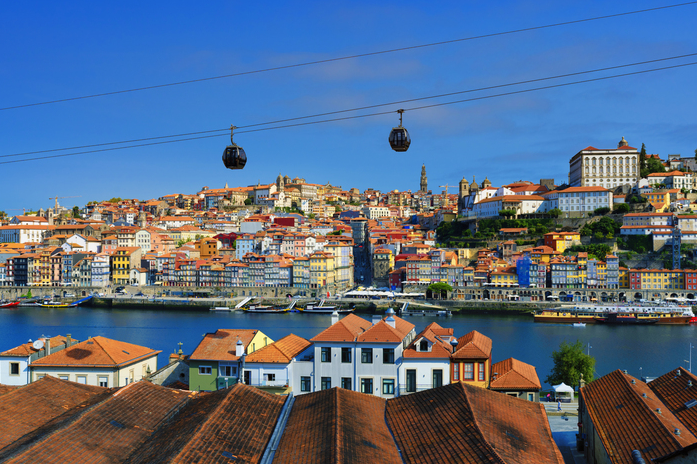Driving in Portugal: Tips, Rules, and Insights
- doursoniy512
- Dec 3, 2024
- 3 min read
Driving in Portugal offers a fantastic way to explore its charming cities, stunning coastlines, and rural landscapes at your own pace. However, understanding the local driving rules and customs is crucial to ensure a safe and enjoyable experience. Whether you’re visiting for leisure or relocating, this guide covers everything you need to know about driving in Portugal.
Understanding Portuguese Driving Laws
Portugal follows European Union road regulations, and driving is on the right-hand side of the road. You must hold a valid driving license, with an International Driving Permit (IDP) required for licenses issued outside the EU. Drivers must carry essential documents, including vehicle registration, insurance papers, and a reflective vest for emergencies.
The minimum driving age is 18, and seat belts are mandatory for all passengers. It’s essential to note that Portuguese law enforces strict penalties for violations, particularly for speeding and drunk driving. The blood alcohol limit is 0.05%, lower than in some countries, so it’s wise to avoid alcohol entirely if you plan to drive.
Navigating Roads and Highways
Portugal boasts an extensive network of well-maintained roads and highways (autoestradas). Toll roads are common, particularly on major routes like the A1, connecting Lisbon to Porto. Drivers can pay tolls manually at booths or use an electronic toll device for convenience. Renting a car with a transponder is a popular choice for visitors.
Rural roads in Portugal can be narrow and winding, so cautious driving is essential. In cities, traffic congestion can be an issue, especially during peak hours. Roundabouts are widespread, and understanding the right-of-way rules is vital. Vehicles inside the roundabout typically have priority unless otherwise indicated.

Parking and Urban Driving
Parking in Portuguese cities can be challenging, particularly in historic areas with narrow streets. Many urban centers have designated parking zones, often indicated by blue lines, requiring payment at nearby machines. Multi-story parking lots are available in larger cities and are a convenient option for long-term parking. Click Here
Avoid parking in areas marked with yellow or red lines, as these indicate no-parking zones. Illegally parked vehicles are frequently towed, so it’s crucial to adhere to local parking regulations.
Renting a Car in Portugal
Renting a car in Portugal is straightforward, with numerous international and local rental agencies available. To rent a car, drivers typically need to be at least 21 years old, although some agencies may require a minimum age of 25. Additional charges may apply for young drivers.
Ensure the rental car is equipped with mandatory items such as a reflective vest, warning triangle, and spare tire. If you plan to explore rural areas, consider renting a vehicle with good ground clearance to navigate uneven roads comfortably.
Driving Etiquette and Safety
Portuguese drivers can be assertive, particularly on highways, where overtaking is common. Use your mirrors frequently and maintain a steady speed to adapt to the flow of traffic. Be cautious of motorcyclists, who often weave between vehicles.
Pedestrian crossings, marked with white stripes, are common in cities. Drivers are required to yield to pedestrians at these crossings, so stay alert, especially in busy areas.
Road signage in Portugal adheres to international standards, and most signs are self-explanatory. GPS devices and navigation apps are invaluable for navigating unfamiliar routes, especially in rural regions with limited signage.
Fuel and Rest Stops
Fuel stations in Portugal are widespread and offer petrol, diesel, and electric charging facilities. Most stations accept major credit cards, but it’s wise to carry some cash, especially in remote areas.
When embarking on long drives, plan rest stops at service areas along highways, which often feature restaurants, restrooms, and convenience stores. Taking regular breaks is vital to staying alert, particularly on extended journeys.
Exploring Scenic Routes
Driving in Portugal presents an excellent opportunity to explore scenic routes and hidden gems. The Algarve region, with its stunning beaches and coastal roads, is a favorite among visitors. The Douro Valley, famous for its vineyards and breathtaking views, offers an unforgettable road trip experience.
For history enthusiasts, the roads leading to medieval towns like Óbidos and Évora provide a glimpse into Portugal’s rich heritage. The freedom to venture off the beaten path makes driving an appealing option for discovering the country’s diverse landscapes.
Conclusion
Driving in Portugal can be an enjoyable and enriching experience with proper preparation and adherence to local rules. From picturesque coastal routes to historic cities, the flexibility of a car allows you to uncover Portugal’s treasures at your own pace. Understanding driving laws, road etiquette, and essential tips ensures a safe and memorable journey. Whether navigating bustling cities or tranquil countryside, hitting the road in Portugal opens the door to countless adventures.


Comments